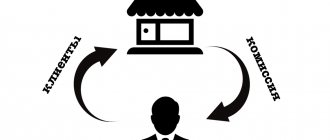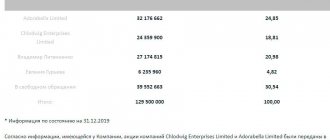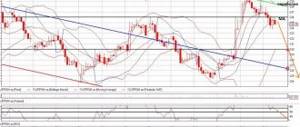On October 7, 1949, Wilhelm Pieck, a veteran of the German Communist Party who returned to Germany from the USSR after many years of emigration, solemnly proclaimed the formation of the German Democratic Republic in the assembly hall of the former Ministry of Aviation of the “Third Reich” in East Berlin. In his speech, the future president of the GDR emphasized that this decision was made “by all parties and mass political organizations” unanimously.
Education of the GDR: President Wilhelm Pieck, Chairman of the Council of Ministers Otto Grotewohl, First Secretary of the SED Central Committee Walter Ulbricht (from left to right)
Which indeed was the case. But the fact is that the pro-Stalinist Socialist Unity Party of Germany, the SED, which ruled in the Soviet zone of occupation (as it was officially called) had long ago crushed all the “mass public organizations” in East Germany, and the other political parties that formally existed in the country had no independent did not play a role.
The partition of Germany already existed
The formation of the GDR and (four months earlier) the Federal Republic of Germany in the west of the country, in the American, British and French occupation zones, recorded the division of Germany at the political and state level. But in fact, the division already existed by that time. The confrontation between the USSR and the Western allies, which developed into the Cold War, began immediately after the defeat of the Nazi regime. There was no democratic legislation, no free elections, no freedom of the press and assembly, no independent trade unions in the east of the country. Even traveling from east to west in a still formally undivided country was already possible only with special passports, which were not issued to everyone.
Context
a brief description of
On May 23, 1949, the Federal Republic of Germany (FRG) was proclaimed. It included sections of Nazi Germany located in the British, American and French zones of occupation. A special article of the Constitution of the Federal Republic of Germany assumed that in the future the rest of the German territories would also be part of the newly formed state.
Due to the occupation of Berlin and the granting of a special status to it, the capital of the country was moved to the provincial town of Bonn. On October 7 of the same year, the German Democratic Republic (GDR) was proclaimed in the Soviet occupation zone. Berlin was appointed its capital (in fact, only the eastern part of the city, which was under the control of the GDR). For the next 40-odd years, the two German states existed separately. Until the 1970s, the government of the Federal Republic of Germany categorically did not want to recognize the GDR. Later she began to recognize the “neighbors,” but only partially.
The peaceful revolution in the GDR, which took place in the fall of 1990, led to the fact that on October 3 its territories were integrated into the Federal Republic of Germany. At the same time, the capital of Germany was returned to Berlin.
Now let's get acquainted with these events in more detail.
Development of the GDR
The self-government bodies of the GDR, which were in charge of the administration of the German lands, ceased to exist in 1956, when a decision was made to liquidate local self-government bodies. The lands began to be called districts, and district councils began to represent the executive power. At the same time, the personality cult of advanced communist ideologists began to be implanted. The policy of Sovietization and nationalization led to the fact that the process of restoration of the post-war country was greatly delayed, especially against the backdrop of the economic successes of Germany.
Division of Germany after surrender
When the Allied forces (America, USSR, Great Britain and France) captured Nazi Germany, its territory was divided between them into four occupation zones. Berlin was also divided, but it received a special status. In 1949, the Western Allies united their territories and named the region Trizonia. The eastern part of the country remained under Soviet occupation.
Post-war Germany
After the end of World War II, Germany found itself divided between two occupation camps. The eastern part of this country was occupied by troops of the Soviet Army, the western part was occupied by the Allies. The western sector was gradually consolidated, the territories were divided into historical lands, which were administered by local governments. In December 1946, a decision was made to unite the British and American occupation zones - the so-called. Bisonia. It became possible to create a unified land management body. Thus, the Economic Council was created - an elected body empowered to make economic and financial decisions.
Education Germany
On May 24, 1949, the Parliamentary Council meeting in Bonn (a city that belonged to the British occupation zone), under the strict control of military governors, proclaimed the Federal Republic of Germany. It included newly created areas at that time belonging to the British, American and French occupation zones.
On the same day, the constitution was adopted. Article 23 of the document declared its extension to Berlin, which formally could only be partly part of the Federal Republic of Germany. The main provisions of this article also provided for the prospect of extending the constitution to other German lands. Thus, the basis was laid for the entry into Germany of all territories of the pre-existing German Empire.
The preamble to the constitution clearly outlined the need to unite the German people on the basis of a recreated state. The document itself was positioned as temporary, so it was officially called not the constitution, but the “Basic Law”.
Since Berlin was endowed with a special political status, it was not possible to maintain the capital of the Federal Republic there. In this regard, it was decided to appoint the provincial city of Bonn, in which the country of Germany was proclaimed, as its temporary capital.
Creation of the GDR
The German lands of the Soviet occupation zone did not intend to recognize the laws of the Federal Republic of Germany adopted on May 23, 1949. On May 30, delegates of the German People's Congress, elected two weeks earlier, adopted the constitution of the GDR, recognized by the 5 states of Soviet occupation. On the basis of the adopted constitution in the republic, which also called itself East Germany, state authorities were created.
On October 19, elections to the Chamber of Lands and the People's Chamber of the first convocation took place. The chairman of the Socialist Unity Party of Germany (SED), Wilhelm Pieck, became the president of the GDR.
Education of the GDR
The process of state creation also took place in the eastern German lands occupied by the troops of the Soviet Union. The controlling body in the east was SVAG - the Soviet Military Administration. Under the control of SVAG, local government bodies - lantdagi - were created. Marshal Zhukov was appointed commander-in-chief of the SVAG, and in fact the master of East Germany. Elections to the new government bodies were held according to the laws of the USSR, that is, on a class basis. By special order of February 25, 1947, the Prussian state was liquidated. Its territory was divided between new lands. Part of the territory went to the newly formed Kaliningrad region, all settlements of the former Prussia were Russified and renamed, and the territory was populated by Russian settlers.
Officially, SVAG maintained military control over the territory of East Germany. Administrative control was carried out by the central committee of the SED, which was completely controlled by the military administration. The first step was the nationalization of enterprises and lands, confiscation of property and its distribution on a socialist basis. In the process of redistribution, an administrative apparatus was formed that took on the functions of state control. In December 1947, the German People's Congress began to function. In theory, the Congress was supposed to unite the interests of West and East Germans, but in fact in the Western lands its influence was insignificant. After the separation of the western lands, the NOC began to perform the functions of parliament exclusively in the eastern territories. The Second National Congress, formed in March 1948, carried out the main events related to the Constitution of the emerging country being prepared. By special order, the German mark was issued - thus, the five German states located in the zone of Soviet occupation switched to a single monetary unit. In May 1949, the Constitution of the socialist democratic state was adopted and the Inter-Party Social and Political National Front was formed. The preparation of the eastern lands for the formation of a new state was completed. On October 7, 1949, at a meeting of the German Supreme Council, the creation of a new body of supreme state power, called the Provisional People's Chamber, was announced. In fact, this day can be considered the date of birth of a new state created in opposition to the Federal Republic of Germany. Decoding the name of the new state in East Germany - the German Democratic Republic, East Berlin became the capital of the GDR. The status of West Berlin was negotiated separately. For many years, the ancient capital of Germany was divided into two parts by the Berlin Wall.
Political status and prospects for expansion of Germany
From the very beginning, the government of the Federal Republic of Germany has clearly defined what the Federal Republic is. It positioned itself as the sole representative of the interests of the German people, and Germany itself as the only follower of the German Empire. Therefore, it is not surprising that it had claims to all lands belonging to the empire before the expansion of the Third Reich. These lands included, among other things, the territories of the GDR, the Western part of Berlin, as well as the “former eastern regions” that were transferred to Poland and the Soviet Union. In the first years after the founding of the Federal Republic of Germany, its government tried in every possible way to avoid direct contact with the government of the GDR. The reason is that it could indicate recognition of the GDR as an independent state.
America and Great Britain also remained of the opinion that the legitimate successor of the empire was the Federal Republic of Germany. France believed that the German Empire had disappeared as such back in 1945. Harry Truman, the 33rd President of the United States, refused to sign a peace treaty with Germany because he did not want to recognize the existence of two German states. In 1950, at the New York conference, the foreign ministers of the three countries finally came to a common denominator on the question “what is the Federal Republic of Germany?” The claims of the government of the republic regarding the sole representation of the German people were recognized. However, they refused to recognize the government as the governing body of all Germany.
Due to the refusal to identify the GDR, German legislation recognized the existence of a single German citizenship, therefore it called its citizens simply Germans, and did not consider the territories of the GDR as foreign countries. That is why the country had a citizenship law adopted back in 1913. The same law was also in force in the GDR until 1967, which was also a supporter of unified citizenship. In practice, the current situation meant that any German living in the GDR could come to Germany and get a passport there. To prevent this, the leaders of the Democratic Republic prohibited its residents from obtaining passports in the Republic of Germany. In 1967, they introduced GDR citizenship, which received official recognition in Germany only 20 years later.
The reluctance to recognize the borders of the Democratic Republic was reflected in maps and atlases. So, in 1951, maps were published in Germany in which Germany had the same borders as in 1937. At the same time, the division of the republic, as well as the division of lands with Poland and the Soviet Union, was indicated by a barely noticeable dotted line. On these maps, the toponyms that had fallen to the enemy remained under their old names, and any signs of the GDR were simply absent. It is noteworthy that even in the maps of 1971, when the whole world clearly understood what the Federal Republic of Germany and the GDR were, the situation did not change much. The hatched lines became more visible, but still differed from those that would mark the boundaries between states.
Development of Germany
The first Chancellor of the Federal Republic was Konrad Adenauer, an experienced lawyer, administrator and activist of the Center Party. His concept of leadership was based on a social market economy. He remained as Chancellor of the Federal Republic of Germany for 14 years (1949-1963). In 1946, Adenauer founded a party called the Christian Democratic Union, and in 1950 he headed it. The head of the opposition Social Democratic Party was Kurt Schumacher, a former Reichsbanner fighter who was imprisoned in Nazi concentration camps.
Thanks to the assistance of the United States in the implementation of the Marshall Plan and Ludwig Erhard's plans for the economic development of the country in the 1960s, the German economy rushed upward. In history, this process was called the “German Economic Miracle.” To meet the need for inexpensive labor, the Federal Republic supported an influx of guest workers, mainly from Turkey.
In 1952, the states of Baden, Württemberg-Baden and Württemberg-Hohenzollern were united into the single state of Baden-Württemberg. The Federal Republic of Germany became a federation consisting of nine states (member states). In 1956, after a referendum and the signing of the Luxembourg Treaty with France, the Saar region, which was previously under the protectorate of France, became part of the Federal Republic of Germany. Its official annexation into the Republic of Germany (FRG) occurred on January 1, 1957.
On May 5, 1955, with the abolition of the occupation regime, the Federal Republic of Germany was officially recognized as a sovereign state. Sovereignty extended only to the area of validity of the temporary constitution, that is, it did not cover Berlin and the former territories of the empire, which at that time belonged to the GDR.
In the 1960s, a series of emergency laws were developed and implemented that banned the activities of a number of organizations (including the Communist Party), as well as certain professions. The country waged active denazification, that is, the fight against the consequences of the Nazis being in power, and tried with all its might to ensure the impossibility of a revival of Nazi ideology. In 1955, Germany joined NATO.
Relations with the GDR and foreign policy
The government of the Republic of Germany did not recognize the GDR and, until 1969, refused to enter into diplomatic relations with states whose positions on this issue differed. The only exception was the Soviet Union, which recognized the GDR, but was part of four occupying powers. In practice, this reason only led to the severance of diplomatic relations twice: with Yugoslavia in 1967 and with Cuba in 1963.
Back in 1952, Stalin spoke about the unification of the Federal Republic of Germany and the GDR. On March 10 of the same year, the USSR invited all occupying powers to develop a peace treaty with Germany as quickly as possible, in cooperation with all-German governments, and even drafted this document. The Soviet Union agreed with the unification of Germany and, provided that it did not participate in military blocs, even allowed the existence of an army and military industry in it. The Western powers effectively rejected the Soviet proposal, insisting that the newly unified country should have the right to join NATO.
Berlin Wall
On August 11, 1961, the People's Chamber of the GDR decided to build the Berlin Wall, a 155 km long engineering and defensive structure that strengthens the border between the two German republics. As a result, construction began on the night of August 13. By 1 a.m., the border between West and East Berlin was completely blocked by GDR troops. On the morning of August 13, people who were usually heading to the western part of the city to work encountered resistance from law enforcement agencies and paramilitary patrols. By August 15, the approach to the border was completely blocked by barbed wire, and construction of the fence began. On the same day, the metro lines that connected the two parts of the city were closed. Potsdamer Platz, which was located in the border zone, was also closed. Many buildings and residential buildings adjacent to the dividing line between East and West Berlin were evicted. The windows that faced the German territory were blocked with bricks. Later, during the reconstruction of the barrier, the buildings adjacent to it were completely demolished.
Construction and refurbishment of the structure continued until 1975. Initially, it was a fence made of concrete slabs or brickwork, equipped with barbed wire. In some sections, these were simple Bruno spirals that could be overcome with a deft jump. At first, this was used by defectors who managed to bypass police posts.
By 1975, the wall was already an impregnable and rather complex structure. It consisted of concrete blocks 3.6 meters high, on top of which cylindrical barriers were installed. A restricted area with a large number of obstacles, guard posts and a lighting device was equipped along the wall. The exclusion zone consisted of a simple wall, several strips of anti-tank hedgehogs or metal spikes, a metal mesh fence with barbed wire and a flare system, a road for patrols, a wide strip of regularly leveled sand, and finally the impenetrable wall described above.
Change of Chancellor
When Willy Brandt assumed the post of Chancellor of the Federal Republic of Germany in 1969, a new round began in relations between Germany and the GDR. The Social Democrats who came to power weakened legislation and recognized the inviolability of post-war state borders. Willy Brandt and his follower Helmut Schmidt improved relations with the Soviet Union.
In 1970, the Moscow Treaty was signed, in which Germany renounced its claims to the eastern regions of the former German Empire, which were transferred to the USSR and Poland after the war. The document also declared the possibility of uniting the republics. This decision marked the beginning of the “new Eastern policy”. In 1971, the Federal Republic of Germany and the German Democratic Republic signed a Fundamental Treaty regulating their relationship.
In 1973, both republics joined the UN, despite the fact that Germany still did not want to recognize the international legal independence of the GDR. Nevertheless, the status quo of the Democratic Republic, enshrined in the Founding Treaty, contributed to a warming in relations between the “neighbors.”
Settlement of relations between the GDR and the Federal Republic of Germany
Deciphering the contradictions between the two fragments of one state gradually normalized relations between the countries. In 1973, the Treaty came into force. He regulated relations between Germany and the GDR. In November of the same year, Germany recognized the GDR as an independent state, and the countries established diplomatic relations. The idea of creating a single German nation was introduced into the Constitution of the GDR.
"Peaceful Revolution"
In September 1989, the opposition movement “New Forum” arose in the GDR, partly consisting of members of political parties. The following month, a wave of protests swept across the republic, whose participants demanded the democratization of politics. As a result, the leadership of the SED resigned, and its place was taken by representatives of the disgruntled population. On November 4, a massive rally coordinated with the authorities took place in Berlin, the participants of which demanded respect for freedom of speech.
On November 9, citizens of the GDR received the right to freely (without good reason) travel abroad, which led to the spontaneous fall of the Berlin Wall. After the elections held in March 1990, the new government of the GDR began active negotiations with representatives of the Federal Republic of Germany about the prospect of unification.
Historical chronicle
07.10.1949
- on the territory of the Soviet zone of occupation of Germany, consisting of the states of Mecklenburg-Vorpommern, Brandenburg, Saxony-Anhalt, Saxony and Thuringia, the German Democratic Republic was proclaimed.
08.02.1950
— the Ministry of State Security of the GDR (unofficial name “Stasi”) was created.
25.07.1950
- Walter Ulbricht was elected General Secretary of the Central Committee of the Socialist Unity Party of Germany. Since 1953, Ulbricht has been the first secretary of the SED Central Committee, and since 1971, honorary chairman of the SED. At the same time, since 1960, he held the positions of Chairman of the State Council of the GDR and Chairman of the National Defense Council of the GDR (since 1960).
17.06.1953
- demonstrations and strikes in East Berlin and more than 700 localities in the GDR. The number of participants is up to 1 million people. Anti-government protests were suppressed by Soviet troops. At least 55 people were killed and more than 1,500 were convicted for their participation in the riots.
07.10.1949
- on the territory of the Soviet zone of occupation of Germany, consisting of the states of Mecklenburg-Vorpommern, Brandenburg, Saxony-Anhalt, Saxony and Thuringia, the German Democratic Republic was proclaimed.
08.02.1950
— the Ministry of State Security of the GDR (unofficial name “Stasi”) was created.
25.07.1950
- Walter Ulbricht was elected General Secretary of the Central Committee of the Socialist Unity Party of Germany. Since 1953, Ulbricht has been the first secretary of the SED Central Committee, and since 1971, honorary chairman of the SED. At the same time, since 1960, he held the positions of Chairman of the State Council of the GDR and Chairman of the National Defense Council of the GDR (since 1960).
17.06.1953
- demonstrations and strikes in East Berlin and more than 700 localities in the GDR. The number of participants is up to 1 million people. Anti-government protests were suppressed by Soviet troops. At least 55 people were killed and more than 1,500 were convicted for their participation in the riots.
13.08.1961
- The Berlin Wall was erected.
03.05.1971
- Erich Honecker was elected first secretary of the SED Central Committee. Since 1976, Honecker has been General Secretary of the Central Committee of the SED, a position he held until October 13, 1989. At the same time, Erich Honecker has been chairman of the National Defense Council since 1971, and since 1976 also chairman of the State Council.
08.11.1973
- Diplomatic relations were established between the GDR and the Federal Republic of Germany.
19.08.1989
— after the dismantling of barriers on the border of Hungary and Austria, citizens of the GDR, who had the right to freely visit Hungary, began to move en masse to Germany through the so-called Hungarian corridor.
04.09.1989
— the first demonstration took place in Leipzig under the slogan “We are the people!” with demands for civil liberties and the opening of the borders of the GDR. The so-called Monday demonstrations were repeated every Monday until March 1990.
07.09.1989
- a solemn celebration of the 40th anniversary of the GDR. General Secretary of the CPSU Central Committee Mikhail Gorbachev was present at the celebrations.
18.10.1989
- by a unanimous decision of the Politburo of the SED Central Committee, Erich Honecker was relieved of all posts. Egon Krenz became the leader of the GDR.
09.11.1989
- Secretary of the SED Central Committee Günter Schabowski, during a live press conference, announced the free travel of GDR citizens abroad, which comes into force immediately. Under pressure from hundreds of thousands of people, East German border guards opened the border. The spontaneous dismantling of individual sections of the Berlin Wall began.
17.11.1989
— The Ministry of State Security has been transformed into the Department of National Security.
01.12.1989
— Article 1 on the socialist nature of the state and the leading role of the party was excluded from the constitution of the GDR.
03.12.1989
- resignation of the Politburo and the Central Committee of the SED in its entirety. On December 6, Egon Krenz resigned from his post as Chairman of the State Council of the GDR.
14.12.1989
— The Council of Ministers of the GDR issued a resolution dissolving the National Security Office.
04.02.1990
- SED transformed into the Party of Democratic Socialism
18.03.1990
— the first and last free parliamentary elections in the history of the GDR took place, the Christian Democratic Union won.
31.08.1990
- The Treaty on the unification of the GDR and the Federal Republic of Germany was concluded.
12.09.1990
— in Moscow, the state “Treaty on the Final Settlement in relation to Germany” was signed between the GDR, Germany and the victorious countries in World War II (USSR, USA, Great Britain and France).
03.10.1990
(00:00 Central European Time) - The German Democratic Republic has officially ceased to exist.
German reunification
In August 1990, the Federal Republic of Germany and the German Democratic Republic signed an agreement on the unification of the country. It provided for the liquidation of the Democratic Republic and its entry into the Republic of Germany in the form of five new states. In parallel, the two parts of Berlin were reunited, and it again received the status of capital.
On September 12, 1990, representatives of the GDR, West Germany, USA, USSR, Great Britain and France signed an agreement that finally resolved the German issue. According to this document, an amendment was to be included in the Constitution of the Federal Republic of Germany stating that after the re-establishment of the state, it would renounce claims to the remaining territories that once belonged to the German Empire.
In fact, in the process of unification (the Germans prefer to say “reunification” or “restoration of unity”), no new state was created. The lands of the former territory of the GDR were simply accepted into the Federal Republic of Germany. At the same moment, they began to obey the “temporary” constitution of the Republic of Germany, adopted back in 1949. The recreated state has since become known simply as Germany, but from a legal point of view it is not a new country, but an expanded Federal Republic.
Unification of the Federal Republic of Germany and the German Democratic Republic
In 1990, the Christian Democratic Union came to power in the GDR, which immediately began to consult with the German government on the issue of uniting countries and creating a single state. On September 12, an agreement was signed in Moscow between representatives of the former allies of the anti-Hitler coalition on the final settlement of the German question.
The unification of Germany and the GDR would have been impossible without the introduction of a single currency. An important step in this process was the recognition of the German Deutsche Mark as a common currency throughout Germany. On August 23, 1990, the People's Chamber of the GDR decided to annex the eastern lands to the Federal Republic of Germany. After this, a series of transformations were carried out that eliminated socialist institutions of power and reorganized state bodies along the West German model. On October 3, the army and navy of the GDR were abolished, and instead of them, the Bundesmarine and Bundeswehr - the armed forces of the Federal Republic of Germany - were stationed in the eastern territories. The decoding of the names is based on the word “Bundes”, which means “federal”. The official recognition of the eastern lands as part of the Federal Republic of Germany was secured by the adoption of new subjects of state law by the Constitutions.








